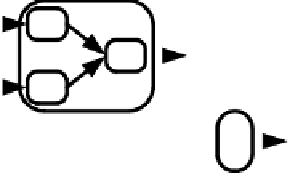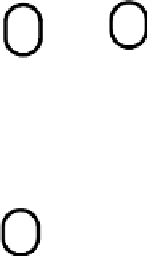Information Technology Reference
In-Depth Information
and for the OR neuron one derives the boundaries as
y
ª
0,
S
,
!
,
º
.
(6.8)
ww
¬
¼
1
n
Similar to
AND
and
OR fuzzy neurons
, several other
fuzzy neurons
, such as
implication-OR
,
Kwan and Cai's fuzzy neuron
,
etc
. have been proposed (Fuller,
1995).
6.3 Neuro-fuzzy System Selection for Forecasting
The most common approach to numerical-data-driven neuro-fuzzy modelling is to
use a Takagi-Sugeno-type fuzzy model along with differentiable operators and
continuously differentiable membership functions (
e.g
. Gaussian function) for
building the fuzzy inference mechanism, and the weighted average defuzzifier for
defuzzification of output data. The corresponding output inference can then be
represented in a multilayer feedforward network structure, such as the one depicted
in Figure 6.6. In principle, the neuro-fuzzy network's architecture (Figure 6.6) is
identical to the architecture of ANFIS, as shown in Figure 6.3.
/
x
1
y
1
1
G
1
1
:
:
z
1
Z
1
/
b
+
f
1
X
y
M
1
x
n
G
1
n
:
:
:
:
+
b
x
1
y
1
m
G
M
1
:
:
+
X
f
m
z
M
Z
M
/
b
/
x
n
G
M
n
y
M
m
Figure 6.6.
Fuzzy system as a multi-input multi-output feedforward neural network
The neuro-fuzzy model presented in Figure 6.6 is based on Gaussian
membership functions. It uses Takagi-Sugeno-type fuzzy rules, product inference,
and weighted average defuzzification. The nodes in the first layer calculate the
degree of membership of the numerical input values in the antecedent fuzzy sets.
The product nodes (u ) in the rectangular blocks (rounded corners) represent the
antecedent conjunction operator and the output of this node is the corresponding
degree of fulfilment
"
or firing strength of the rule. The division
l
zl
;
, , ,
,
M
nodes
/
, together with summation nodes (+), help implement the normalized

























Search WWH ::

Custom Search